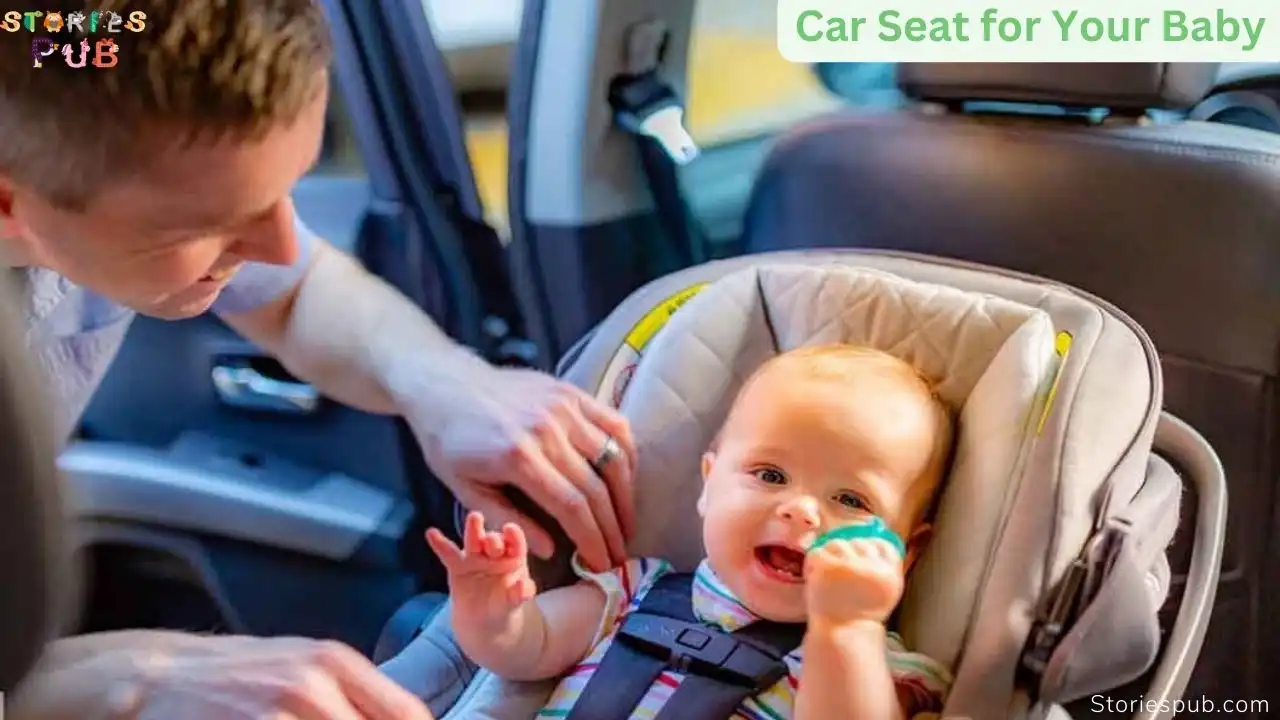How to Insert a Car Seat for Your Baby | All you need to know

If you’re a parent, there’s nothing like the experience of bringing your baby home for the first time. But before you can do that, you need to make sure that you have all the necessary safety precautions in place—and one of the most important is a car seat.
Installing a car seat for your baby is essential for their safety when traveling, but it can seem overwhelming at first. This guide will provide you with all the information you need to know about how to install a car seat correctly so that your little one can ride safely in no time.
The Different Stages of Car Seats for Babies
There are several types of car seats for newborns, including:
- Rear-facing only car seats: These seats are designed for infants and are used only in a rear-facing position. They typically have a weight limit of around 35 pounds.
- Convertible car seats: These seats can be used both in a rear-facing position for infants and then converted to a forward-facing position for older children. They typically have a weight limit of around 40-65 pounds.
- 3-in-1 car seats: These seats can be used as a rear-facing car seat, a forward-facing car seat, and then as a booster seat for older children. They typically have a weight limit of around 40-100 pounds.
- Infant car seats: These seats are used for infants and typically have a weight limit of around 22-35 pounds. It can be installed with the base in the car and the car seat can be detached for carrying the baby outside the car.
How to Choose the Right Car Seat for Your Baby
When choosing a car seat for your baby, there are several factors to consider:
- Age and weight: Look for a car seat that is appropriate for your baby’s age and weight. Newborns should be in a rear-facing car seat until they reach the maximum weight or height limit for that seat.
- Ease of use: Make sure the car seat is easy to install and use. It should have clear instructions and be easy to adjust straps and harnesses.
- Safety features: Look for a car seat with safety features such as side-impact protection, a five-point harness, and a sturdy frame.
- Compatibility: Consider the size of your vehicle and ensure that the car seat you choose will fit in your car. If you have a small car, look for a car seat that is compact and easy to install.
- Brand reputation: Research the brand and read reviews of the specific model you are considering to get an idea of the experiences of other parents.
- Longevity: Look for a car seat that can be converted to different types as your baby grows, so that you can use it for as long as possible.
The Pros and Cons of Using a Car Seat for Your Baby
If you’re a new parent, you may be wondering if you should use a car seat for your baby. There are pros and cons to using a car seat, so it’s important to weigh your options before making a decision.
Pros:
1. Car seats keep babies safe. They’re designed to protect babies in the event of a car accident, and they’re much safer than putting a baby in a seat without one.
2. Car seats are required by law in many states. If you live in a state that requires car seats, you’ll need to use one anyway.
3. Car seats can be used for other purposes, like strollers or swings. Many car seats come with adapters that allow them to be used with other products (like strollers or swings). This can be helpful if you don’t want to buy separate products for each purpose.
Cons:
1. Car seats are expensive. If you’re on a budget, buying a car seat can be tough. Luckily, there are often deals and discounts available on car seats (especially if you buy them used).
2. Car seats are heavy and bulky. They can be difficult to carry around, especially if you have more than one child in tow. Additionally, they often take up a lot of space in the car (which can be an issue if you have a smaller vehicle).
3. Car seats can be tricky to install correctly. If you don’t install the car seat correctly, it won’t be safe for your baby. This can be confusing and time-consuming, so be sure to read the instructions carefully before installation.
How to Install a Car Seat for Your Baby
Assuming you have already read the blog article, we will now provide additional detail on how to install a car seat for your baby. Installing a car seat for your baby can be a bit tricky, but with the right tools and a bit of patience, you can do it safely and correctly. Here are the basic steps for installing a car seat:
- Read the manual: Make sure you read the manual for your specific car seat and vehicle before you begin the installation. This will give you an idea of the tools you’ll need and the specific instructions for your seat.
- Choose the right location: Choose the right location for your car seat in your vehicle. Rear-facing seats should be installed in the back seat, away from active airbags.
- Secure the base: Fasten the base of the car seat to the vehicle using either the seatbelt or the Latch system (if available in your vehicle). Make sure the base is level and tightly secured.
- Install the car seat: Place the car seat on the base and secure it in place by clicking it into the base or threading the seatbelt through the appropriate slots.
- Adjust the harness: Adjust the harness to fit your baby snugly, with the straps at or below the shoulders for rear-facing seats, and at or above the shoulders for forward-facing seats.
- Check for proper installation: Check the seat for proper installation by pushing down on the seat and trying to move it side-to-side. It should not move more than an inch in any direction.
How to Use a Car Seat for Your Baby
If you have a baby, you will need to use a car seat whenever you travel. Here is a guide on how to use a car seat for your baby:
1. Choose the right car seat for your baby. There are different types of car seats available, so make sure to select one that is appropriate for your child’s age and size.
2. Read the instructions that come with the car seat carefully. This will help you install the seat correctly and ensure that your baby is properly secured.
3. Place the car seat in the backseat of your vehicle. Make sure that the seat is installed according to the instructions, and that it is firmly secured in place.
4. Place your baby in the car seat, and fasten the straps or harnesses around them. Again, follow the instructions carefully to ensure that they are properly secured.
5. When you reach your destination, unload your baby from the car seat and carry them with you. Never leave a child unattended in a car seat, as they could be injured or even die if they were to become unrestrained while the vehicle is in motion.
Conclusion
Installing a car seat for your baby is an important step in keeping your little one safe while on the road. We’ve provided you with all the information and steps necessary to make sure that your baby’s car seat is securely installed and ready to go.
Always double-check all the straps, locks, and connections to ensure everything is properly secured before each use. Don’t forget to re-check these components regularly as they are subject to wear and tear over time. Your child’s safety should always be at top of your mind when it comes to installing a car seat for them!
Hello Everyone, How did you like this (Parenting) How to insert a Car Seat for Your Baby | All you need to know? if you like this article share your view in the comment box, and don’t forget to share this with your friends on Social Media so they can also redy this. For more keep visiting Storiespub.com.
Suggeted Articles





